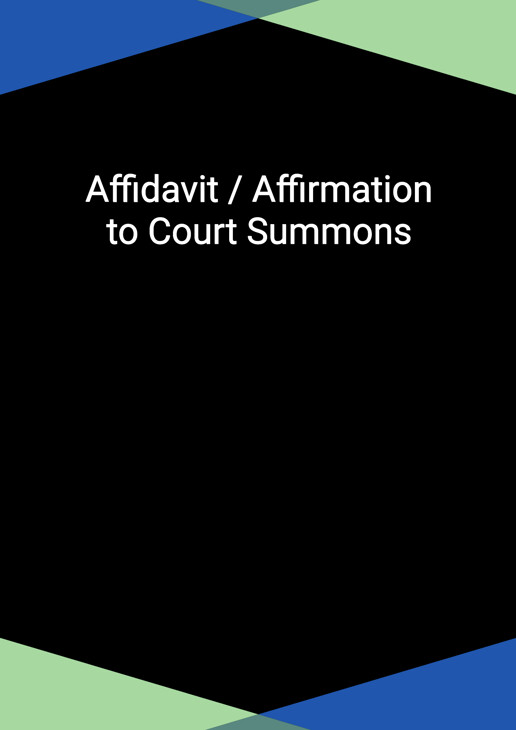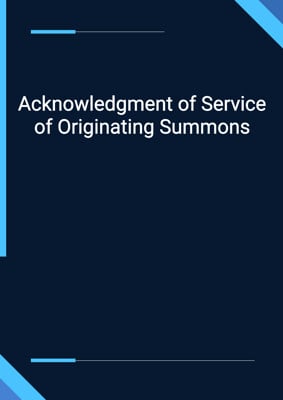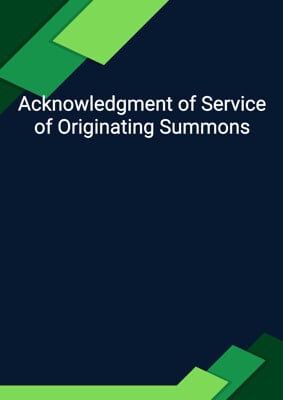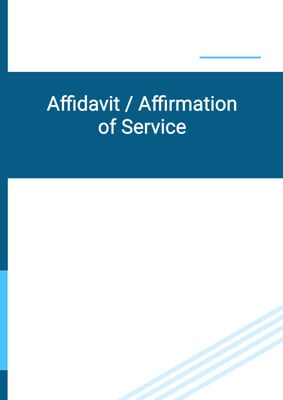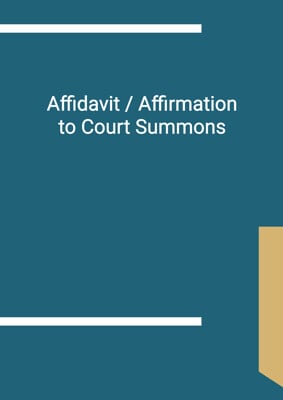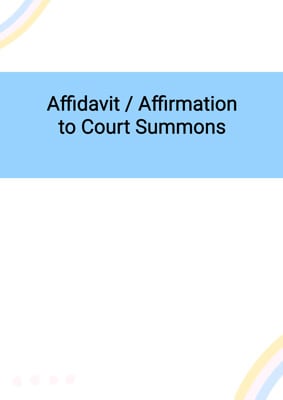How to Tailor the Document for Your Need?
01
Create Document
Fill in the details of the parties. You can click the "Fill with Member’s Information" button to complete it with information saved to your account.
02
Fill Information
Please fill in any additional information by following the step-by-step guide on the left hand side of the preview document and click the "Next" button.
03
Get Document
When you are done, click the "Get Document" button and you can download the document in Word or PDF format.
04
Review Document
The document should be signed by the authorised signatory (or directors of a company) and witnessed to complete the formality.
Document Preview
Document Description
The document titled 'Affidavit / Affirmation to Court Summons' is a legal document that is used in court proceedings. It serves as a written statement of facts and is typically used to support or oppose a motion or claim. The importance of this document lies in its ability to provide evidence and support to the parties involved in a legal case.
The entire document consists of multiple sections, each serving a specific purpose. The first section is the title, which clearly identifies the document as an 'Affidavit / Affirmation to Court Summons'. This sets the context and informs the reader about the nature of the document.
The content of the document starts with a reference number and the court of jurisdiction. This information helps in identifying the specific case and court where the document is being filed. It is followed by the names of the plaintiff and defendant, who are the parties involved in the legal dispute.
The document then proceeds with an affirmation or affidavit, depending on the choice made by the person filing it. The affirmation or affidavit is a solemn declaration made by the person, stating that the facts mentioned in the document are true to the best of their knowledge, information, and belief. This section also includes a statement that supports the summons filed on a specific date.
The name of the person making the affirmation or affidavit is mentioned, along with their address. This helps in identifying the person and establishing their credibility. The document also includes the date and location where the affirmation or affidavit is being made. This adds authenticity to the document.
The final part of the document includes the signature of the person making the affirmation or affidavit, along with the signature of a commissioner for oaths, notary public, justice of peace, or judiciary. This verifies the authenticity of the document and ensures that it can be legally recognized.
In summary, the 'Affidavit / Affirmation to Court Summons' document is a crucial piece of evidence in legal proceedings. It provides a detailed account of the facts related to a case and is used to support or oppose a motion or claim. Each section of the document serves a specific purpose, from identifying the parties involved to making a solemn declaration of truth. It is essential to follow the correct format and include all the necessary information to ensure the document's validity and effectiveness.
How to use this document?
1. Enter the relevant information: Start by filling in the necessary details, such as the court's jurisdiction, the case number, and the names of the plaintiff and defendant. This will help in identifying the specific case and the parties involved.
2. Choose between an affirmation or affidavit: Depending on the purpose of the document, decide whether to make an affirmation or an affidavit. An affirmation is typically used when the person making the statement has religious or moral beliefs, while an affidavit is a more general declaration.
3. State the relationship: Clearly mention the relationship of the person making the affirmation or affidavit to the case. This helps establish their credibility and connection to the matter at hand.
4. Make a truthful statement: Provide a detailed and accurate statement of the facts related to the case. Ensure that the information mentioned is true to the best of your knowledge, information, and belief.
5. Include the necessary signatures: Sign the document at the appropriate place, indicating that you are making the affirmation or affidavit. Additionally, ensure that a commissioner for oaths, notary public, justice of peace, or judiciary also signs the document to verify its authenticity.
6. File the document: Once the document is complete, file it with the court. Make sure to follow the proper procedures and submit the document within the specified timeframe.
7. Serve the document: If required, serve a copy of the document to the opposing party. This ensures that all parties involved are aware of the contents of the affirmation or affidavit.
8. Keep a copy for your records: It is essential to retain a copy of the completed document for your own records. This will serve as proof of the affirmation or affidavit made in the court proceedings.
9. Seek legal advice if necessary: If you have any doubts or concerns about the content or process of making the affirmation or affidavit, consult with a legal professional. They can provide guidance and ensure that you comply with all legal requirements.
10. Follow court instructions: Finally, follow any additional instructions or requirements provided by the court regarding the submission and use of the affirmation or affidavit. Adhering to these instructions will help ensure that the document is properly considered and given appropriate weight in the legal proceedings.
Not the right document?
Don’t worry, we have thousands of documents for you to choose from:
